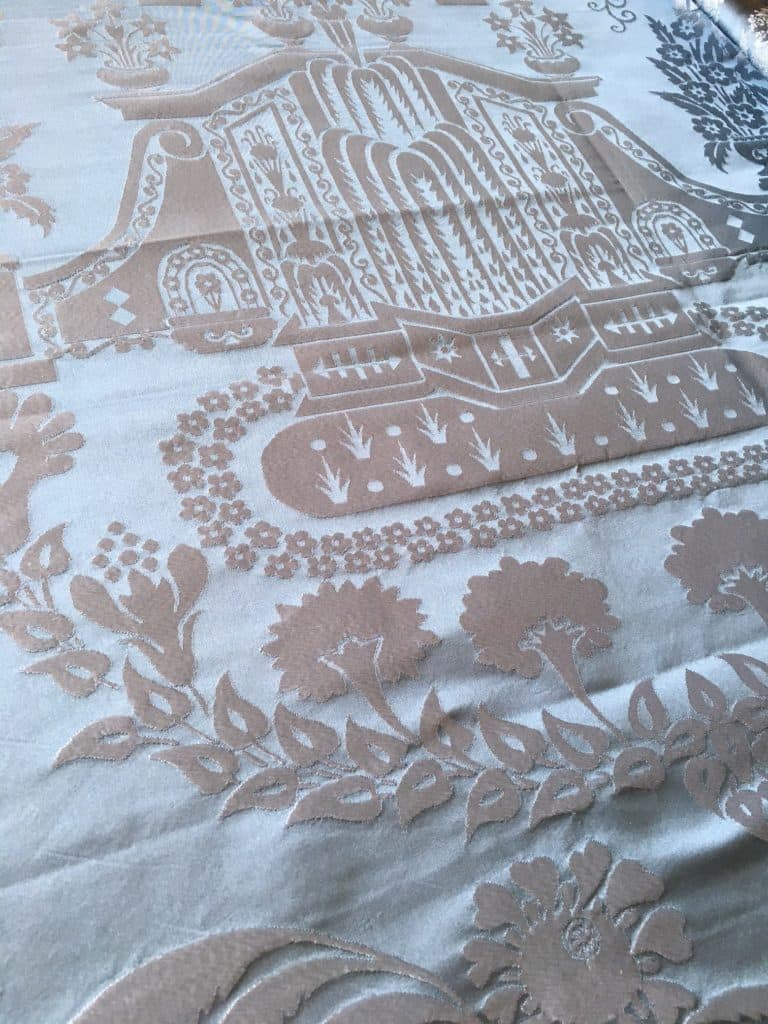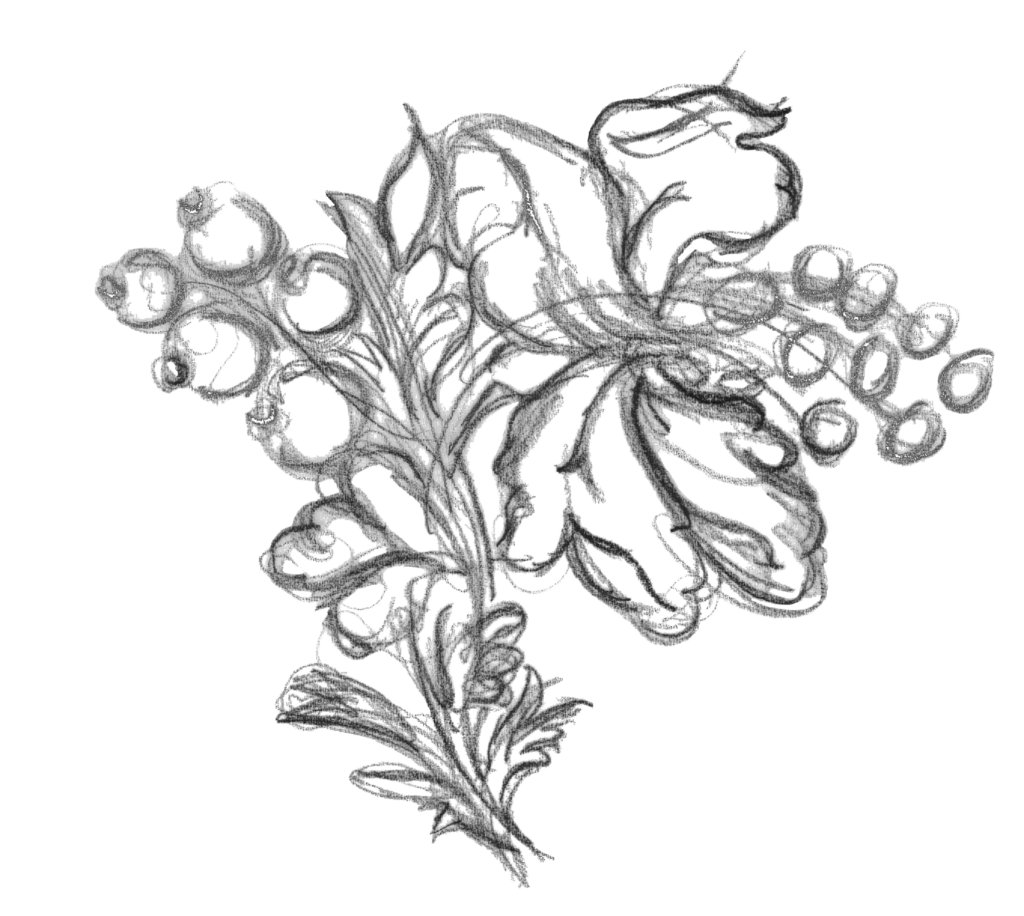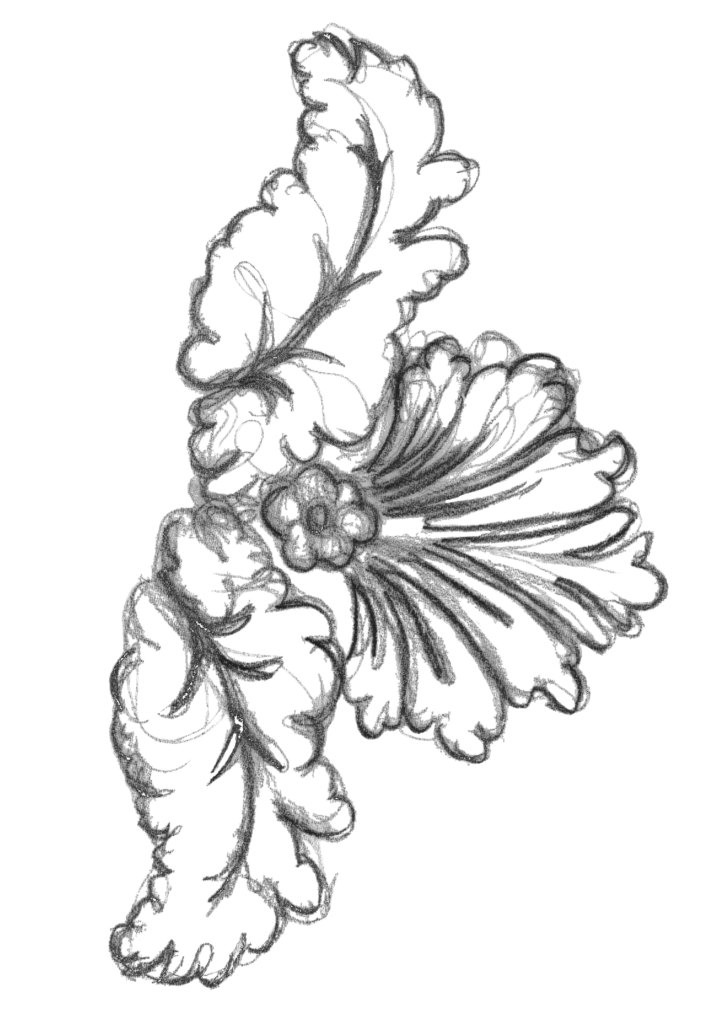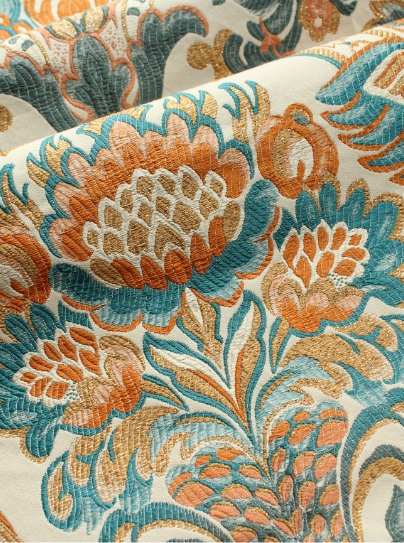Hatfield & Pannier: Silk: from Spitafields to Sudbury
Sudbury produces nearly 95 percent of the nation’s woven silk textiles and in 2015 ‘Sudbury Silk’ was awarded protected geographical status; such is the importance of protecting its heritage and true origin. Sudbury Silk is desired the world over by couture fashion houses and for the finest interiors, of which examples are framed on display in the latest exhibition at Gainsborough’s House.
Humphries Weaving were pleased to loan two fabrics for the exhibition ‘Silk: From Spitalfields to Sudbury’ at Gainsboroughs’ House, Sudbury. The exhibition is running up until 8th October 2017 and tells the story of how Sudbury became the Silk capital of the country.
The two fabrics lent to the exhibition have their own stories and are of importance in their own right. The first is the ‘Pannier Damask’, woven for the Blue Drawing Room at Buckingham Palace in the time of Queen Mary. Secondly the ‘Hatfield Damask’, found at Hatfield House, Hertfordshire, a pattern attributed to the Spitalfields weaver James Leman.
Buckingham Palace
The Blue Drawing Room at Buckingham Palace has also been known as the South Drawing Room, it is a grand interior, originally intended as a ballroom. It is now often used for spectacular drinks receptions.
Here you can see broad loom all silk damask in powder blue for the gilt chairs and sofas. Also a broad loom silk and cotton damask in a two tone powder blue effect, in the same design to highlight the pattern for the window drapes and other room furnishings The design is unusual in the Palace décor in that it features a pair of game birds, and has since been used for decoration on the palace retail carrier bag. A similar design was woven in 1921 a version of which can be seen in the Warner Textile Archive.
The Pannier damask is on display at the exhibition alongside fabrics woven at other Sudbury mills.
Hatfield House: The Long Gallery Furniture Restoration
The Hatfield design was used for the restoration of upholstery on early 18th Century chairs in blue. The unique design, redrawn from the last remaining repeat of damask at Hatfield House, in a Chinese style attributed to James Leman of Spitalfields.
The project was first approached in 1983 when the design was found featured on the 1709 crimson bed. The costs of weaving new bed drapes in the damask pattern of some 427 yards long were too expensive and could not be justified. The Hatfield Damask is incredibly detailed and it is almost incomprehensible that it was designed and woven using a draw loom. Due to the complexity of the design and weaving process this would have been a very unusual and expensive fabric of its time.
However in 2011 with the use of the latest Jacquard looms we were able to create a cost effective custom woven silk cloth for the restoration of Long Gallery furniture. The design is attributed to James Leman based on findings at the V&A collection by Natalie Rothstein. From the last remaining full repeat of the design we redrew the pattern to once again bring the history to life. The reupholstered chairs are now on public display in the long gallery.

Detail within the Hatfield Damask
Above are brief descriptions of 2 designs. One of the most intreguing and fascinating things about textiles is the history it holds. Each design has its own story and tells us about the people who would have chosen the design, their taste, style, wealth and social status. We often find that country houses are linked by their textiles and this can reveal all kinds of interesting tales.
The exhibition at Gainsboroughs House tells some tales through silk and the weaving industry and is open until the 8th of October 2017.







